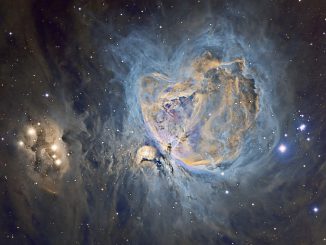An international team of astronomers using the HAWK-I camera attached to the European Southern Observatory’s Very Large Telescope captured this stunning deep infrared view of the Orion Nebula in 2016 showing an abundance of brown dwarfs and planetary-mass objects. The famous nebula stretches 24 light years across and even though it is about 1,350 light years from Earth it is easily visible to the unaided eye as the somewhat fuzzy “star” in the middle of Orion’s sword. Amelia Bayo, co-author of a paper discussing the HAWK-I view said “understanding how many low-mass objects are found in the Orion Nebula is very important to constrain current theories of star formation. We now realise that the way these very low-mass objects form depends on their environment.”




